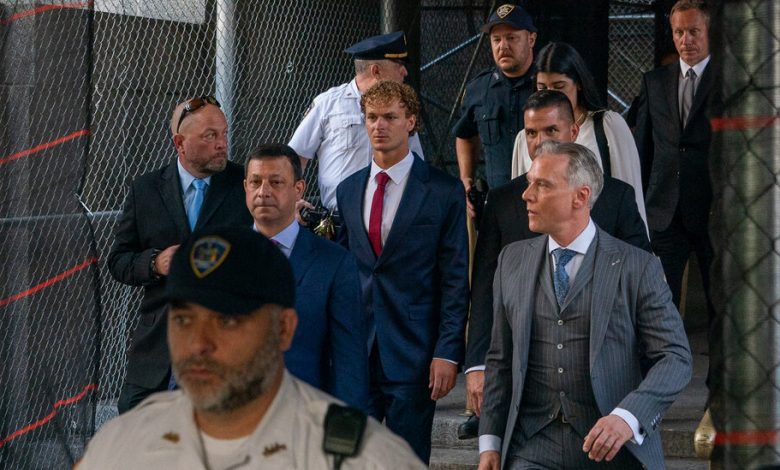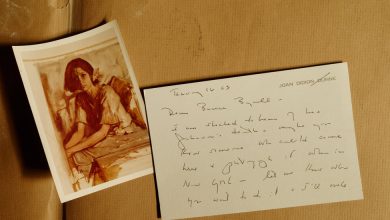Witnesses in Subway Chokehold Case Describe Fears of Death and Violence

One passenger believed he was going to die as Jordan Neely approached him. Another heard Mr. Neely say, “I want to go to prison,” and she shielded herself with her son’s stroller as Mr. Neely made “half-lunge movements” at others. A third heard him say, “Someone is going to die today.”
A new court filing that seeks to dismiss the case against Daniel Penny, the man who killed Mr. Neely in a subway car in May, draws on the grand jury testimony of subway passengers to make the case that Mr. Penny was defending others when he placed Mr. Neely, who was homeless and had a history of mental illness, in a chokehold.
In June, the grand jury voted to indict Mr. Penny on charges of manslaughter and criminally negligent homicide, to which he pleaded not guilty. Monday’s defense filing offers more witness testimony about what happened in the F train car than any previous accounting, though naturally, it presents the best view of the case for Mr. Penny.
The case has been politically volatile, involving issues that have polarized New Yorkers: violent incidents on the subway and the vulnerability of homeless and mentally ill people struggling through a crisis of affordability in an unequal city. It was also understood through the prism of race relations: Mr. Neely was Black and Mr. Penny is white.
At a trial, prosecutors would have to prove that Mr. Penny used deadly force without having reasonably believed that Mr. Neely was also about to do the same. The filing suggests that Mr. Penny’s lawyers — Thomas Kenniff, Steven Raiser and Barry Kamins — may be able to call at least four witnesses who could testify that they had feared for their lives.
Prosecutors with the Manhattan district attorney’s office will file their response motion later this year. A spokeswoman for the office declined to comment.
Motions to dismiss a case are a standard tactic, and Mr. Penny’s legal team was expected to file this month. The motion begins with factual background that opens on May 1, the day that Mr. Penny and Mr. Neely encountered each other on the crowded northbound train car.
It was reported almost immediately after the incident that Mr. Neely had been yelling at other passengers, that he had said he was hungry and thirsty and that he was ready to die. Testimony from the grand jury, in which witnesses were questioned by prosecutors, provides new details, though it is unclear what the filing leaves out of the picture: In order to indict, the grand jury would have found that there was reasonable cause to believe that Mr. Penny committed a felony.
Some of the quotes included in the filing speak to the tense atmosphere on the car that day. One witness, a daily passenger, told the jurors, “I have encountered many things, but nothing that put fear into me like that.” Another said that once Mr. Penny confronted Mr. Neely, their movements on the ground together “really just looked like a struggle,” adding that it did not look as though Mr. Penny had control of the situation.
Mr. Penny’s lawyers also argue that the prosecution failed to prove that Mr. Penny caused Mr. Neely’s death, asserting that the determination of a medical examiner who found that Mr. Penny had died from asphyxiation was incomplete. They say that Mr. Penny did not apply a lethal chokehold, and that the search of his phone’s history was inappropriate.





